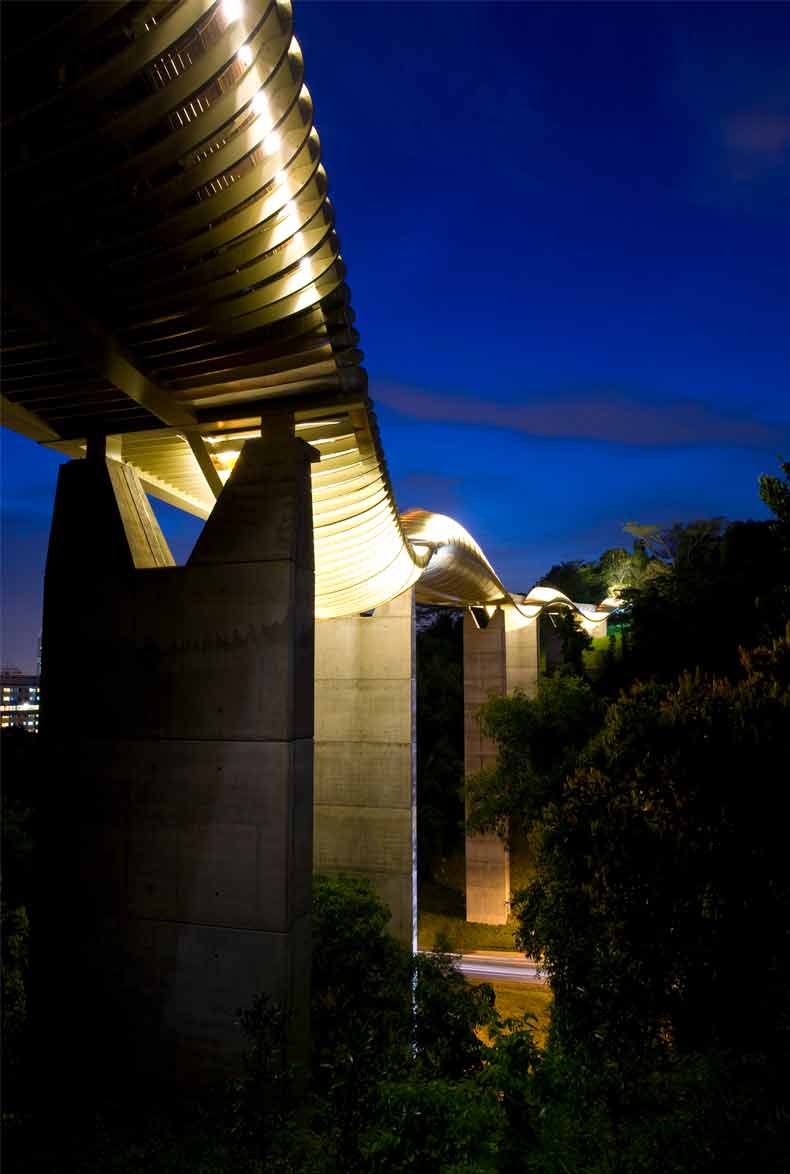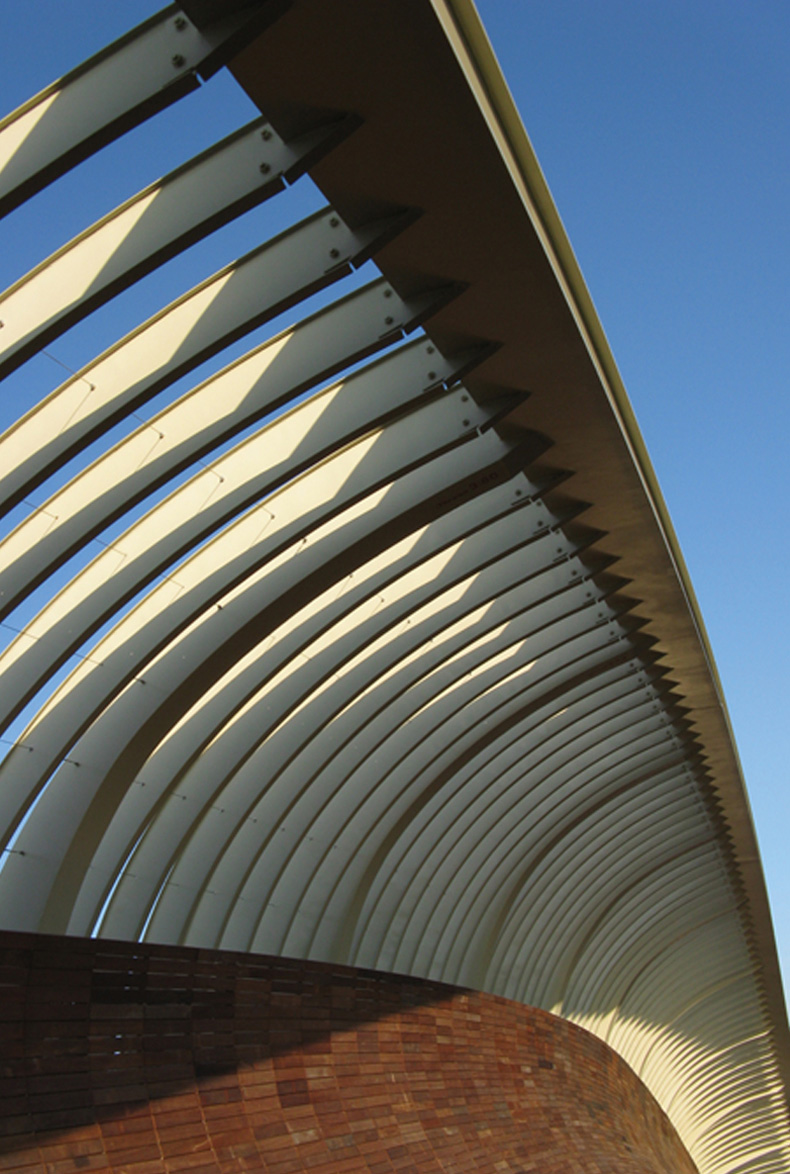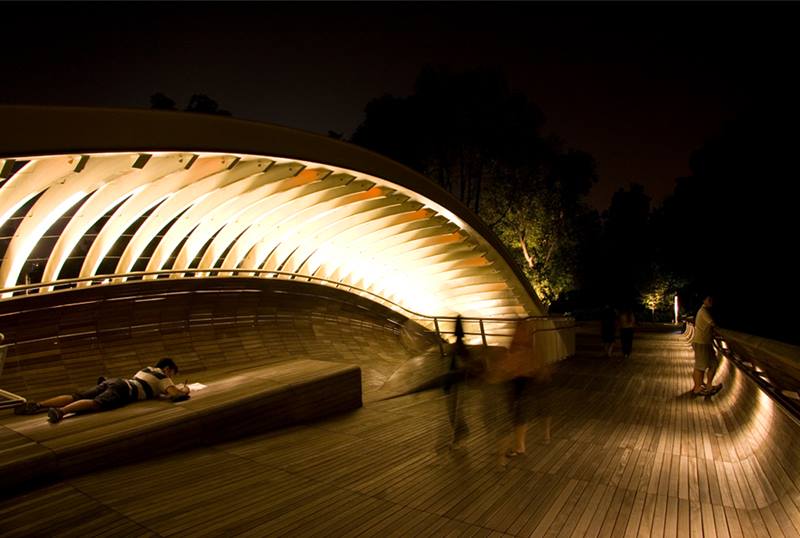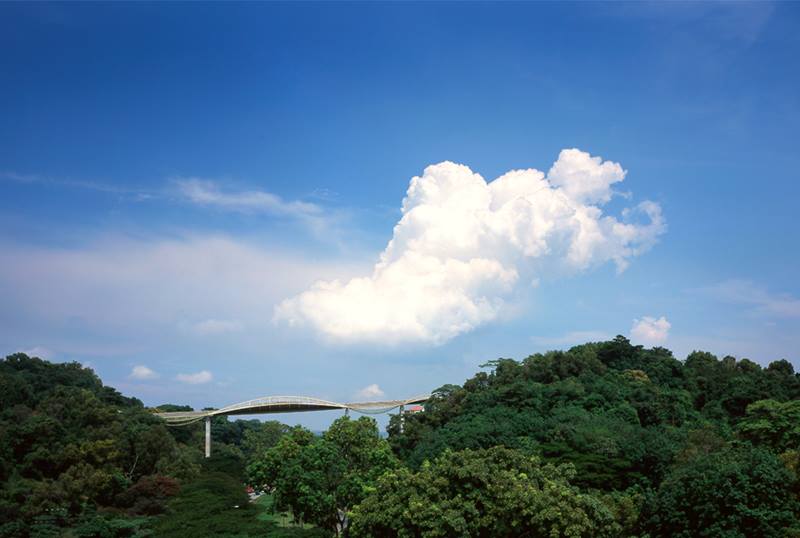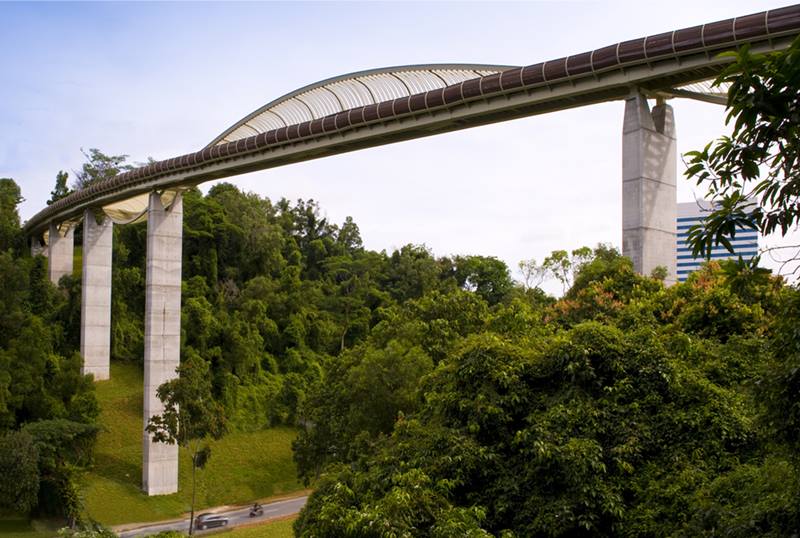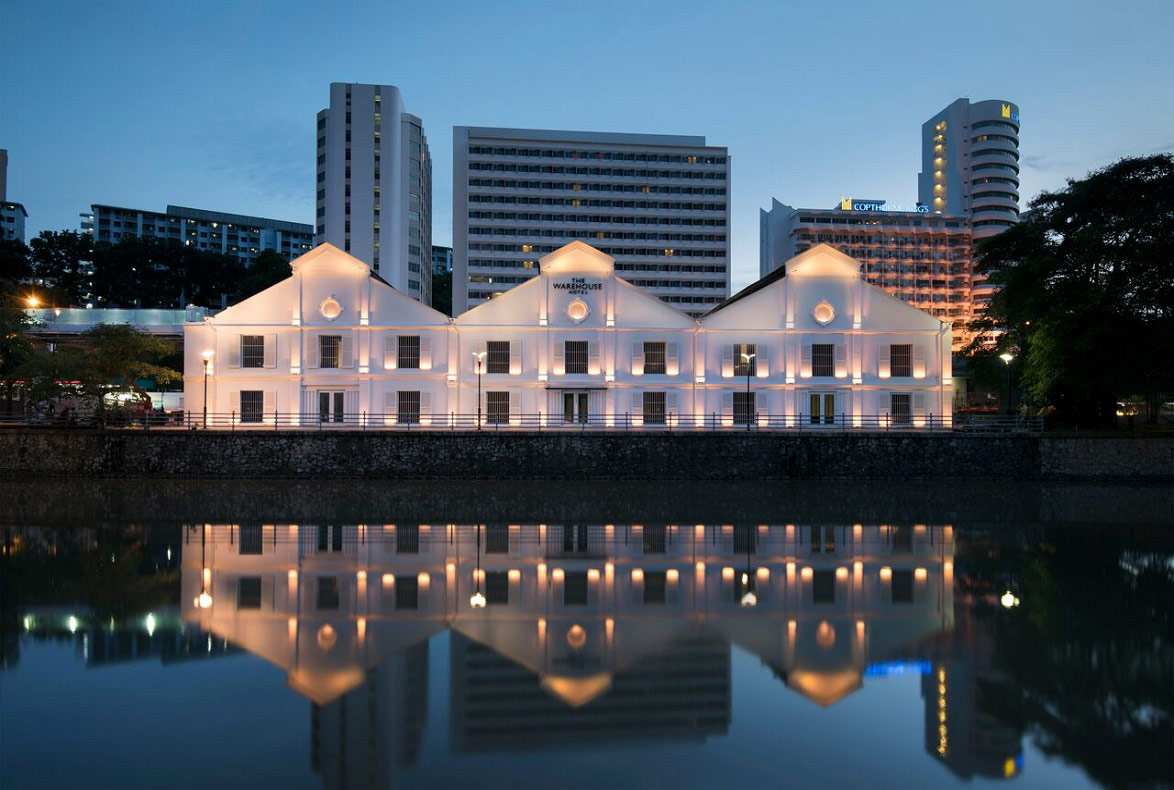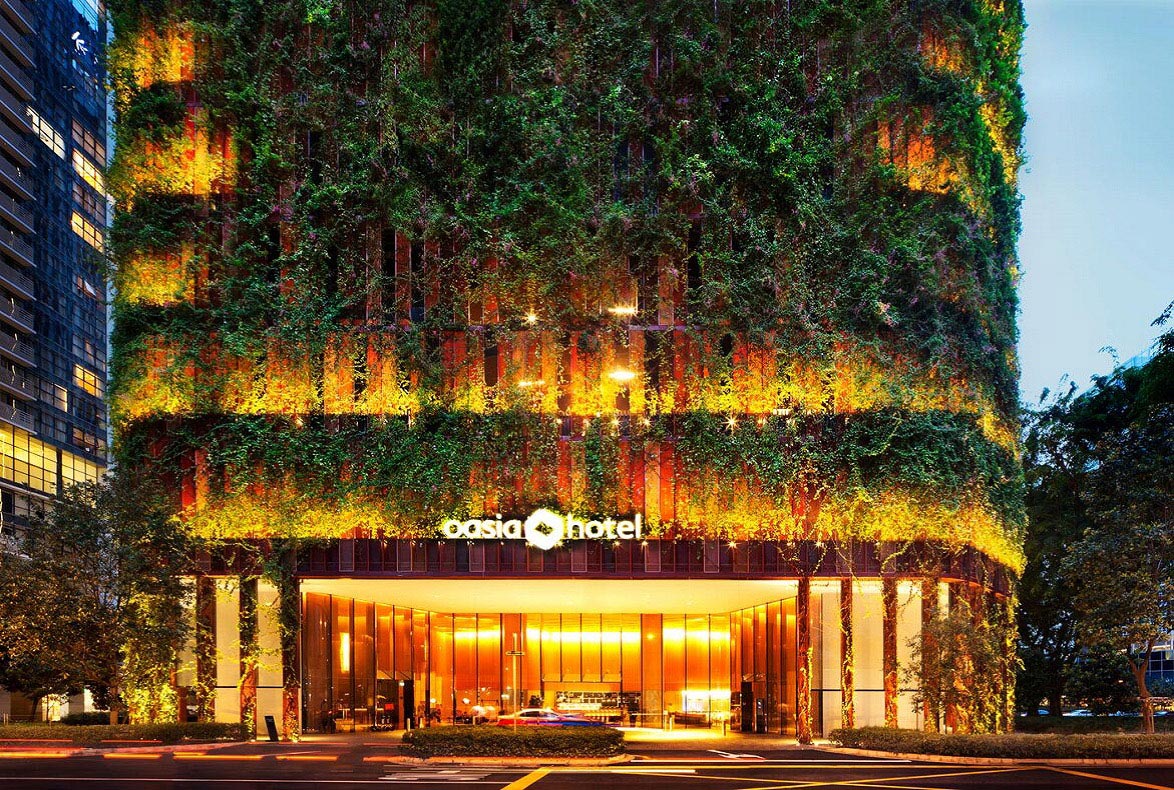* DESIGN OF
THE YEAR 2009
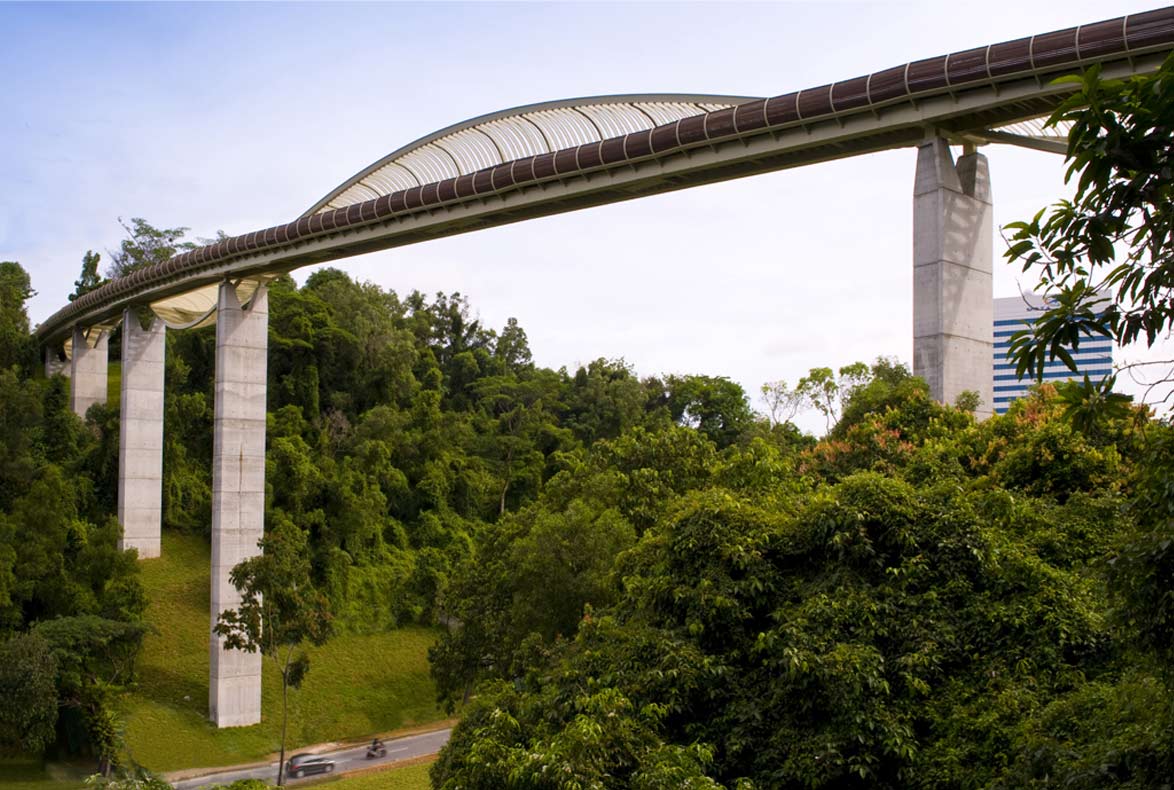
Henderson Waves
Henderson Waves was commissioned by the Urban Redevelopment Authority of Singapore to be constructed following an open international competition to turn the Southern Ridges into a new nine-kilometre recreational and leisure destination. The eyecatching bridge, the highest pedestrian bridge in Singapore, springs from a scenic location off Mount Faber and spans 284 metres across Henderson Road to Telok Blangah with a flowing organic form of seven “wave” spans.
Designed by RSP Architects Planners & Engineers (Pte) Ltd and IJP Corporation Ltd, UK, the bridge has been carefully integrated into the natural landscape connecting existing pathways and parks to provide natural and continuous access from both hills. The team’s design philosophy rests on a belief in “socially responsive and sustainable designs which create a positive impact on both people and the environment”. Drawing on this philosophy, the inspiration for the organic surface form of undulating crests and troughs came from the abstraction of the Southern Ridges’ natural landforms and the desire to create a destination of event spaces for spontaneous social interactivities.
The innovative design concept for the bridge is a folded three-dimensional surface-form cleverly created by a mathematical equation articulated as a continuous organic and structural form which bends, undulates and ascends in a singular movement. The structure is also functional, flowing, forming and reforming into access ramps, balustrades, benches and shelters for leisure walking and scenic viewing for the public. At night, the bridge is lit like a lantern, setting a distinctive landmark in the previously under-utilised Telok Blangah Hill Park and understated nearby neighbourhood.
To connect the two ridges of Telok Blangah and Mount Faber parks, the design process, digital and physical modellings, structural analyses and fabrication methods were integrated simultaneously from an early design stage to its final completion. The process involved studies of laser-cut models of varying scales to achieve the desired visual definition of the ribbed surface and, thereafter, continued with studies of a threedimensionally curved steel structure to be fabricated by local two-dimensional fabrication methods. This involved extensive creative interaction between the designers, engineers and fabricators to realise the project.
Liu Thai Ker of RSP Architects Planners & Engineers explains, “This project demonstrates three levels of innovation. Firstly, it was the design process of using mathematical formulas crafting the form on site to derive the final design in drawings. Secondly, the process of translation from the drawings to suit local construction practice and fabrication technology. This was carried out through discussions with contractors to formulate parts of three-dimensional elements to be re-worked in two-dimensional individual sections to the nearest three dimensional coordinates. Thirdly, special care was required in the setting out of the structural steel members in order to relate and accommodate seamlessly to the double curvature forms of the timber balustrades and back panels.”
The bridge’s underlying ecological message emerges in the naturally weathered structural concrete pylons, which were limited to minimise impact with maximum bridge intermediate spans within the tree conservation area. To reduce the ecological footprint further, as well as to provide a contextual relationship and connection to the site, indigenous Yellow Balau timber was used extensively as modular tapestry surface decks and as curved balustrades and backrests connected on the supporting steel spans and wave structures. The timber was sourced from certified sustainable timber farms in East Malaysia and fabricated with precision using the latest technology, thus reducing material wastage.
Because the surface form is a highly accurate mathematical model with accuracies up to three decimal points, the design team found it a challenge to maintain a highly precise design and fabrication process in the fabrication of the steel structures and timber deck. Any oversight in detailing or even the slightest misalignment would disrupt the continuity of the prominent three-dimensional form that was key to the project. Close coordination across disciplines was therefore paramount.
The most outstanding aspect of the bridge, in Dr Liu’s view, is that both form and structure are integrated as one. “The form is a true reflection of the structure and vice versa. Every structural centreline is a precise manifestation of the mathematical surface. In other words, the structure is not post-rationalised after the form and this ensures efficiency in the use of materials and structure.” This was achieved only because the bridge’s formula underwent numerous studies and managed to confront doubts from experts on its feasibility. From this experience, Dr Liu noted,
“One must have the boldness and perseverance to experiment and be ready to learn from failures, and one’s creativity must not be limited by precedents.”
While it was conceived as an environmentally friendly work of art, the bridge was, above all, meant for the enjoyment of the general public, including young and old, abled and disabled, singles and families, even inhabitants of the natural habitat – “no limitations”, as Dr Liu puts it. Since its opening, the bridge has successfully regenerated the surrounding areas with life and activities. The overwhelmingly positive public feedback about the bridge has proven to be the most satisfying aspect of the project for Dr Liu. “We witness people enjoying every part of the project – relaxing on the timber seats and curve backings, strolling on the deck, enjoying the bridge’s evening ambient lighting and resting at the ribbed alcoves with cast rhythmic shades, as they traverse between the two existing natural parks. Everyone seems to find their own space to conduct their activities and develop a relationship with the bridge. It has become a landmark which everyone identifies with.”
Dr Liu hopes that the project will encourage and inspire more designers to create socially responsive and responsible designs. “We hope the bridge will perform well as a social infrastructure serving the community and encourage human interactivity and, as a result, enhance meaningful value to the aesthetic and natural environment and to those living in the nearby estates.”
On being conferred the President’s Design Award, Dr Liu says, “It’s an honour for our office and the best recognition for both the consultant and the contractor teams who had worked hard.”
READ MORE
ABOUT THE DESIGNER
READ MOREARCHITECTURE
RSP Architects Planners & Engineers (Pte) Ltd
Liu Thai Ker (Qualified Person)
Yang Soo Suan (Project Director)
Raymond Hoe
Lawrence Ler Bing Huan
Teong Mee Chen
George Liaropoulos-Legendre (Director)
IJP Corporation Ltd, UK
CIVIL AND STRUCTURAL ENGINEERS
Lai Huen Poh (Qualified Person)
RSP Architects Planners & Engineers (Pte) Ltd
Paul Scott
Adam Kara Taylor Consulting Civil and Structural Engineers, UK
QUANTITY SURVEYOR
KPK Quantity Surveyors (Singapore) Pte Ltd
MAIN CONTRACTOR
Evan Lim & Co Pte Ltd
TIMBER
Venturer Pte Ltd
M AND E
Hoong Kong Pte Ltd
CLIENT MASTERPLANNER
Urban Redevelopment Authority
MECHANICAL AND ELECTRICAL ENGINEER
Squire Mech Pte Ltd, Singapore
LIGHTING CONSULTANT
Parsons Brinckerhoff Pte Ltd, Singapore
CONCRETE
Ah Boon Civil Engineering & Building Contractor Pte Ltd
STEEL
TTJ Design & Engineering Pte Ltd
SIGNAGE
Fuji Signcrafts Industrial Pte Ltd
Insights from the Recipient
Citation
Jury Citation
The Henderson Waves is Singapore’s highest pedestrian bridge. Standing at 36 metres above ground, it spans across Henderson Road in an iconic, sculptural leap.
Based on the principle of parametric design, this new visual symbol has attracted the community to its walkways and shelters. Its three-dimensional surface-form integrates structure and form in a unique wave that undulates dramatically over and under the bridge deck and cleverly forms sheltered seating areas on every upward curve.
With the sensitive use of the natural organic form and materials such as wood and steel, this structure helps unite the Southern Ridges, which comprise a nine-kilometre chain of green, open spaces spanning the rolling hills of Mount Faber Park, Telok Blangah Hill Park and Kent Ridge Park before ending at West Coast Park. The Henderson Waves, together with the Alexandra Arch and the HortPark, brings to reality the Urban Redevelopment Authority’s vision of seamlessly connecting the hills and parks to transform the Southern Ridges into a new recreational destination.
VIEW JURORSNominator Citation
MR KHOO PENG BENG
PRINCIPAL
ARC STUDIO ARCHITECTURE + URBANISM
The new elevated pedestrian bridge located above Henderson Road, connecting the existing ridges of Mount Faber Park to Telok Blangah Hill Park, celebrates and integrates both architecture and engineering. The sculptural design challenges the traditional bridge form that enables the public to enjoy and appreciate in different ways and is unique yet contextual.
Functionally, it serves as an effective ecobridge and relates in a sensitive way to connect the two prominent ecological park ridges that were previously separated physically by Henderson Road. As pedestrians traverse the bridge, views open up not only to the nearby existing hills and the southern coastline of Singapore, but also the city beyond. From feedback, Henderson Waves remains to this date a favourite destination for many families to enjoy nature on weekends. This destination transforms existing urban public spaces on a wider scale, which satisfies the macro-planning objectives of the Urban Redevelopment Authority to link up the hill parks along the Southern Ridges as part of the 2002 “Parks and Waterbodies and Identity Plan” to turn the Southern Ridges into a new recreational and leisure destination.
The design displays great conceptual, spatial and material clarity, whose intelligence is threefold. Firstly, the design not only presents the complex engineering means of 274-metre horizontal seamless steel structural connection of the two existing parks and at 36 metres above the road, but also generated as an architectonic and sculptural three-dimensional expression from a complex mathematical equation performing as a continuous organic form of seven “waves” in six sections to reinforce the perception of a continuing natural form, with the largest central “wave” spanning 57 metres long and six metres high at its apex.
Secondly, the undulating bridge surface curves as balustrades, seats and alcoves designed for varying programmatic experiences for members of the public to tread, sit or enjoy the moment. The bridge continues as a self-illuminated structure with lighting in the evening after 7pm, inversing the light and shadow relationship on the rib structure with its integrated orange LED lights in the steel structures that blend and complement the rustic natural environment. This draws the public right into its realm as a kind of “activity crucible” combined with the serenity of the existing parks.
Thirdly, the extensive use of Yellow Balau timber, an indigenous material sourced from neighbouring East Malaysia, as the key material also convincingly connects the bridge surface to the authentic vitality of the existing hills with some of nature’s greatest gifts of flora and fauna. The timber surface is complex, with doubly-curved portions consisting of nearly 5,000 timber deck modules sitting on top of the steel structure to form a tapestry with sensitive and meticulous attention to technical detailing. Each module varies by a degree in 10-metre intervals and the curves taper to measure with no visible surface fixings.
All of these design moves are manifested such that it is firmly rooted in its immediate site. But more than that, the bridge’s beguiling presence offers itself not only as a landmark but also as a metaphor for the continuing experiment and unlimited possibilities of a fusion of both architecture and engineering.
Form does not follow function in this design: instead, the function follows an elegant and sculptural form of rich assemblage of conceptual, spatial and material relationships that invite participation not only to itself but rekindles life in the connecting parks.


